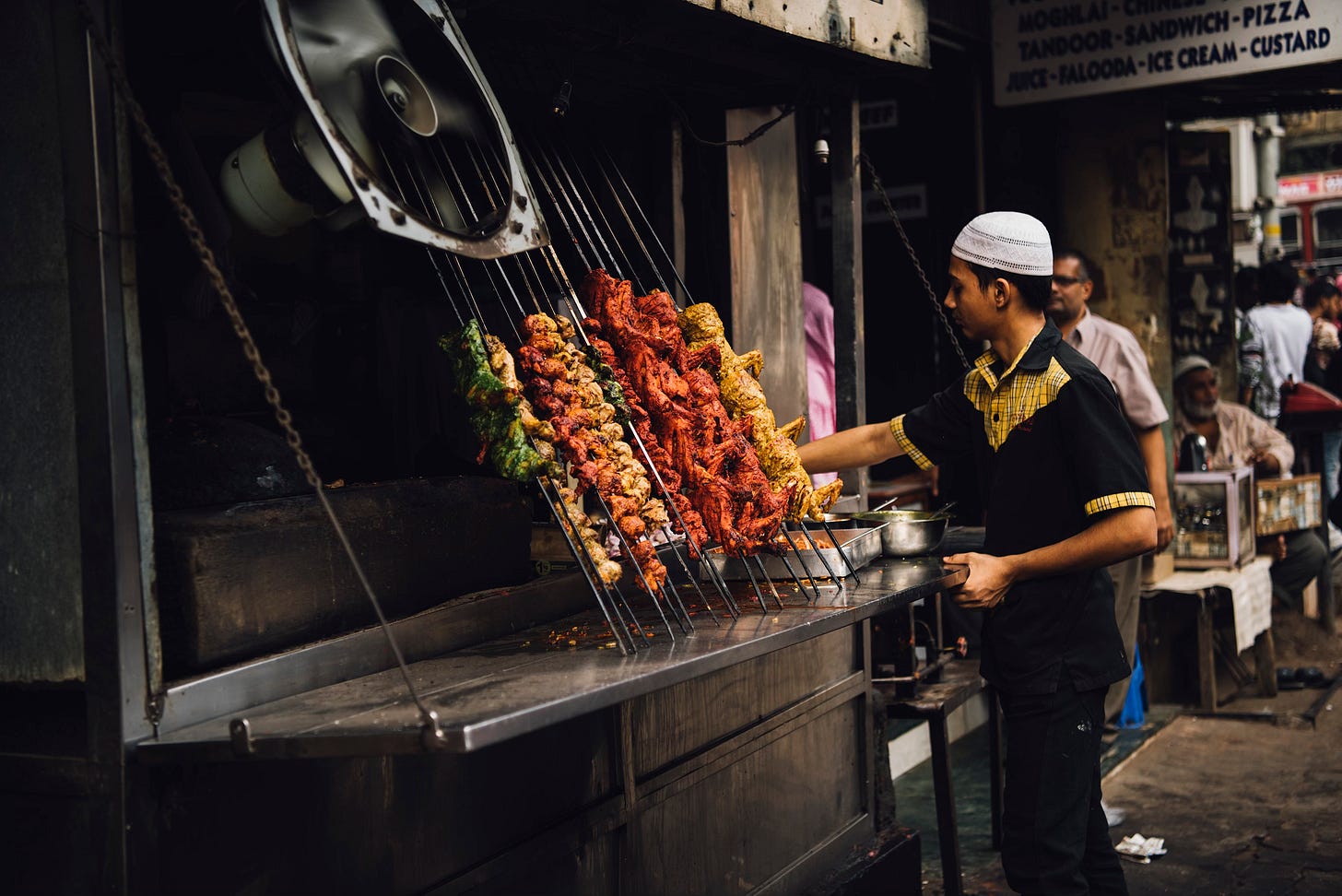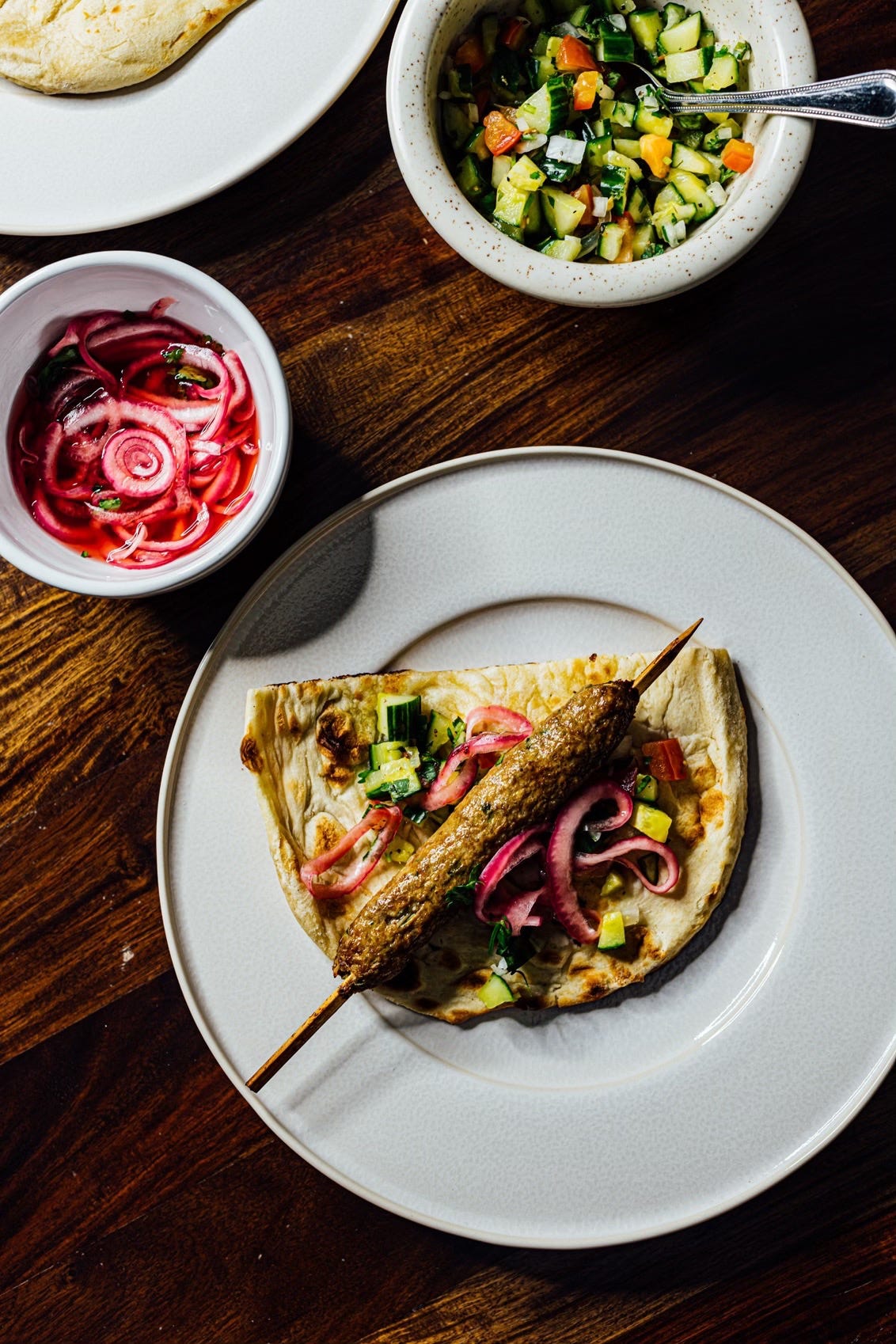Secrets of the Tandoor: What You Won’t Learn at Your Local Takeout
Why naan isn’t homemade in India and how you can recreate tandoori flavor without the clay oven.
Welcome to The Flavor Files (New and Improved)! Thanks for being a loyal subscriber to my work. Your support means a lot, and I recently shared a survey to make sure I’m providing you more of what you crave! Thanks for all the responses, suggestions, and comments! I’m making a few tweaks to my Substack going forward, based on this, and I wanted to share what you can expect.
If you are a free subscriber:
At least 2 new recipes a month
More “weeknight meals” with quick recipes
More vegetables!
More of the “science behind food”, ingredients, techniques, etc.
If you are a paid subscriber:
All free subscriber content
At least one additional monthly recipe, with a focus on flavor inventiveness
In-depth video demos (recipes, techniques, ingredient deep dives, science!)
Access to past Substack recipes
Pre-public and exclusive access to events, classes, and new books
Newsletters (for now) will continue to be released on Sundays, featuring both free and paid content every other week. If you are a free subscriber, don’t fret! You’ll also get a preview of the new paid content, so you can decide what’s best for you. I appreciate everyone’s support, regardless of subscriber level!
Need my latest cookbook, Veg-Table, in your kitchen? Grab a copy here—your veggies will thank you. 🌱💥
Now let’s get into the good stuff. 🔥 This month will be all about TANDOORI!
Before we jump into tandoori food, next weekend is the long July 4th holiday, and I’ve got my curated list of recipes for you right here! It’s time to plan your ultimate summer menu! This roundup is packed with easy and crowd-pleasing 4th of July recipes—think grilled hot dogs with all the fixings, fresh and colorful summer salads, backyard-style pizzas, and homemade ice cream that’ll cool everyone down. Whether you’re hosting a party or heading to a potluck, these festive July 4th dishes are guaranteed to bring the flavor and keep your guests happy from the first bite to the fireworks.
🔥 Fire, Flavor, and Fermentation: The Magic of Tandoori Cooking
I have many fond memories of slipping out late at night with my friends to sneak to the southern tip of Bombay (Mumbai) in India, just to eat kebabs and naan at the famous Bademiya. They served all the North Indian and tandoori dishes we loved, as well as dishes we never had at home, from creamy, tangy butter chicken to spicy chapli and seekh kebabs and caramelized, succulent paneer on skewers, which we enjoyed with fresh, hot naan. It was a joy! And I was young enough to do this a few times a week. It was one of the most rebellious things I did as a kid because I never divulged the details of these trips at home.
Over the next few weeks, we’ll delve into the world of tandoori cuisine, exploring its origins, techniques, and flavors, and even prepare a few dishes together along the way.
There are several reasons why tandoori dishes, such as naan, aren’t prepared at home even in India. Naan is not a daily Indian bread made at home; skillet-prepared rotis and parathas are. The most common reason for this is that a tandoor, the clay oven used to make naan, is large and impractical to keep at home. In India, most people (like we did) will go to a restaurant, and if they’re fortunate to have outdoor space, will hire a chef to haul in a portable tandoor and make it in their backyard.
Tandoori cooking isn't just for chicken. Lamb, fish, shrimp, vegetables, paneer, and even breads like naan and a special version of roti called tandoori roti are prepared in this oven. When most people hear tandoori, they think tandoori chicken—bright red, smoky, served on a sizzling platter. But the technique behind it goes far deeper than a marinade or color. Tandoori cooking is one of the oldest and most flavorful high-heat cooking methods around, and it’s worth knowing for more than just its restaurant fame. Interestingly, while we associate it with North Indian and Pakistani cuisines, this oven has a rich history.
Tandoors date back to ancient civilizations, including the Indus Valley, where communal ovens were often dug into the ground. The word tandoor likely comes from the Persian tanūr, meaning fire oven.
While tandoors have been used for centuries across South and Central Asia, modern tandoori cooking, as we know it today, was popularized in post-Partition Delhi in the 1940s by Punjabi restaurateurs, who brought the technique from cities like Peshawar and Lahore, now in Pakistan. In India, Kundan Lal Gujral, who opened Moti Mahal in Delhi, is credited with popularizing dishes that we know today, including butter chicken (murgh makhani), dal makhani (butter lentils), and tandoori chicken.
🪵 What Is Tandoori Cooking, Really?
At its essence, tandoori cooking is about fire, flavor, and speed. Food is roasted inside a tall, cylindrical clay oven called a tandoor, where wood or charcoal creates blazing heat. Temperatures can soar past 900°F [480°C], cooking food in minutes while sealing in moisture and infusing it with a deep, smoky intensity.
It’s part wood-fired grill, part natural convection oven. Radiant heat from the clay walls, convection from the swirling air, and live smoke all work in tandem, layering texture and flavor with every second.
Traditional tandoors are built from clay, sometimes reinforced with sand, straw, or hay, then insulated with brick. Clay holds and radiates heat beautifully, echoing ancient methods of cooking meat directly over coals.
Using a tandoor is a craft.
Even now, when I visit India, I’ll linger by restaurant kitchens to watch the tandoor cooks in action, slapping dough against the scorching walls for naan, turning skewers of marinated kebabs with practiced precision. There’s a rhythm to it, a speed born of necessity. When the oven’s that hot, there’s no time to hesitate.
I don’t own a tandoor—yet.
This month, in a special series, I’ll show you how to bring those bold, fire-kissed flavors into your home kitchen, no clay oven required. There’s a gleaming stainless steel tandoor I’ve been eyeing for years, still on my wishlist, waiting for the right moment.
A Little Cultural & Historical Context
Tandoors date back to ancient civilizations, including the Indus Valley, where communal ovens were often dug into the ground. The word tandoor likely originates from the Persian tanūr, meaning fire oven.
While they're used across Central and South Asia (and even parts of the Middle East), tandoori cooking as we know it was popularized in post-Partition Delhi in the 1940s, thanks to Punjabi restaurateurs who brought the technique from what is now Pakistan.
And that vivid red hue? Traditionally, it comes from chili and turmeric, but in restaurants, food coloring is often added for consistency and drama.
The Science Behind the Flavor
A few cool things happen when you cook this way:
Maillard Reaction: That blistered, charred exterior? It’s a product of the Maillard reaction, which caramelizes the surface and builds flavor fast.
Yogurt Marinades: The lactic acid and enzymes in yogurt help tenderize proteins while clinging to the surface, with no runoff like watery marinades.
Spice oils + Heat: Spices like earthy cumin, sweet green cardamom, citrusy coriander, and smoky Kashmiri chili contain volatile oils that release their full aroma under high heat, meaning the hotter the oven, the bigger the flavor. Kasoori methi, or dried fenugreek leaves, is another ingredient you will often come across; it is used in many of these dishes to add a sweet scent.
And fun fact: Even vegetables benefit from these effects. Cauliflower, sweet potatoes, and paneer all caramelize beautifully in tandoori-style cooking.
It’s Not Just About Chicken
Tandoori lamb chops, fish, shrimp, and even duck take beautifully to the heat. But vegetables are an unsung hero here, cauliflower, potatoes, carrots, even Brussels sprouts caramelize and char to sweet, smoky perfection.
Don’t forget paneer. Cubes of fresh cheese bind marinades and retain their shape when cooked under high heat, making them ideal for skewering.
If you don’t have a tandoor (and let’s face it, most of us don’t), you can still get close:
Use a pizza stone or steel in your oven for this week’s naan.
Crank the broiler like I do in this tandoori salmon recipe at America’s Test Kitchen.
Fire up a grill or use a cast-iron pan for a sear-and-oven combo for chicken and lamb.
A high-heat air fryer or toaster oven can work surprisingly well for small batches of butter chicken.
A pizza oven is another option that can provide the same degree of heat. With a few tweaks, it’s a worthy contender. I cooked the naan in my Breville Pizzaiolo at 700°F [371°C] for 3 to 4 minutes without rotating or flipping it. Because of its design, the oven will give the naan a more even browning, but where the bread bubbles up, the naan will blister.
Let’s start with Naan?
You’ll need naan—preferably blistered and puffy. My go-to naan recipe (from my cookbook, Season) is simple, flexible, and great with or without a tandoor. It’s this week’s free recipe.
TL;DR
Tandoori = a method, not just a marinade.
Yogurt + spice = flavor science in action.
It’s great for meat, fish, paneer, and all your favorite veggies.
You don’t need a clay oven to start experimenting; your oven and skillet are fantastic.
Tandoori cooking isn’t just about tradition—it’s about transformation. Take something simple, hit it with fire, and watch the magic happen.
Let me know what you’d tandoori-fy first.
—Nik
P.S.
Next week, we’ll take the naan and make something fun, perfect for a breakfast treat.








